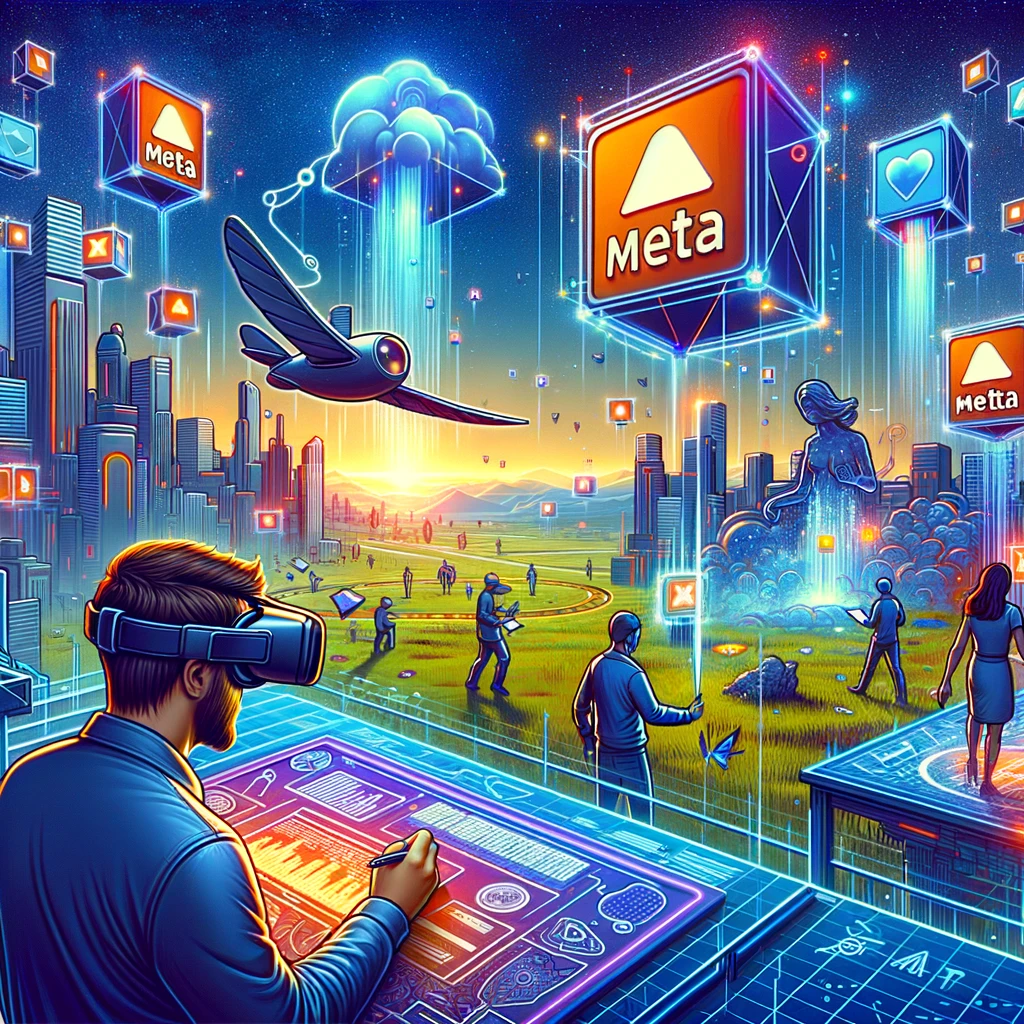Want smarter marketing? Join our FREE community — built for founders, marketers & creators.
The Future of AR & VR in Digital Advertising with Meta
As the digital realm evolves, the boundaries between our physical and virtual worlds continue to blur. Leading this paradigm shift is Meta (formerly known as Facebook), pioneering the integration of Augmented Reality (AR) and Virtual Reality (VR) into its platforms. But what does this mean for digital advertising? Let's explore the transformative potential of AR and VR in the advertising landscape with Meta at the helm.

As the digital realm evolves, the boundaries between our physical and virtual worlds continue to blur. Leading this paradigm shift is Meta (formerly known as Facebook), pioneering the integration of Augmented Reality (AR) and Virtual Reality (VR) into its platforms. But what does this mean for digital advertising? Let’s explore the transformative potential of AR and VR in the advertising landscape with Meta at the helm.
1. Immersive Brand Experiences
- Why: Traditional ads can be passive, but AR and VR create interactive, immersive experiences, deepening engagement and connection.
- How: Imagine a sneaker brand allowing users to virtually “try on” shoes using AR or a travel agency offering VR tours of exotic destinations.
2. Personalized Advertising
- Why: AR and VR can tailor experiences based on user data, making advertising more relevant and impactful.
- How: A makeup brand can offer AR filters matching products to individual skin tones, or a furniture store can let users visualize how a sofa would look in their actual living room via VR.
3. Enhanced Shopping Experiences
- Why: E-commerce can sometimes lack the tangible aspect of in-store shopping.
- How: AR-powered shopping apps can overlay virtual objects in real-time environments, while VR can simulate entire virtual stores, mimicking the physical shopping experience.
4. Interactive Ad Formats
- Why: Engagement rates often dictate the success of digital ads.
- How: VR ads can be entire experiences, such as test-driving a car. AR ads might involve interactive elements, like a character from a movie appearing in one’s living room.
5. Social Integration
- Why: Meta’s platforms, like Instagram and WhatsApp, already have massive user bases.
- How: Integrating AR/VR experiences within these platforms can create viral advertising campaigns, as users share their interactive experiences.
6. Data and Analytics
- Why: AR and VR can provide deeper insights into user behavior.
- How: Beyond mere clicks, brands can gain insights into how users interact with virtual objects, the duration of engagement, and areas of interest, allowing for refined marketing strategies.
Future Implications and Considerations:
- User Privacy: With more immersive experiences come more data. Balancing personalization with privacy will be paramount.
- Technical Challenges: Seamless AR and VR require robust infrastructure. Brands and platforms must invest in technology and address potential technical glitches.
- Content Creation: Crafting AR and VR experiences will require a different set of skills and tools, leading to potential collaborations between tech companies, advertisers, and content creators.
- Cost Implications: While AR and VR can provide unmatched engagement, they might also come with higher production costs, at least initially.
In Conclusion
The foray of AR and VR into digital advertising, with giants like Meta leading the charge, heralds a future where the lines between the real and the virtual become increasingly intertwined. For brands, this presents an unparalleled opportunity to engage, resonate, and leave lasting impressions on consumers in ways previously unimagined. As we stand on the brink of this new era, the onus will be on advertisers and technologists alike to harness these tools responsibly, creatively, and to the benefit of the global user community.



